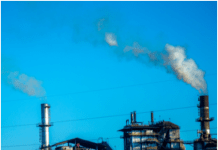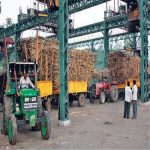Cuba’s sugar production has plummeted to its lowest level since the 19th century, with estimates suggesting the 2025 harvest will yield less than 200,000 metric tons. This marks a dramatic fall for an industry that was once the cornerstone of the Cuban economy and a key part of the country’s national identity.
According to estimates compiled by Reuters from official reports and industry sources, the state-owned sugar company AZCUBA had aimed to produce 265,000 metric tons this year. But with the harvest nearly complete, the actual output is expected to fall short by at least 100,000 tons. In contrast, Cuba produced 350,000 tons in 2023 and 1.3 million tons in 2019. At its peak in 1989, Cuba produced 8 million tons, making it the world’s top exporter of raw sugar. Today, the country will need to import sugar just to meet its basic domestic demand.
The 2022-2023 season, which yielded 350,000 tons, was already the worst since 1898, during Cuba’s War of Independence, when production hit 300,000 tons. The upcoming figures for 2025 now represent a new historical low.
The sharp decline in sugar production is also threatening Cuba’s globally renowned rum industry. Ethyl alcohol made from sugarcane is essential for making authentic Cuban rum, but production of this ingredient has fallen by 70%—from 573,000 hectoliters in 2019 to just 174,000 in 2024. Another alcohol variety used in certain rum types has also seen a similar drop.
“Authentic Cuban rum must be made with alcohol derived from Cuban sugarcane,” a foreign businessman told Reuters. “We are using reserves, but there is concern over how long these will last.”
The collapse is widespread across the country. Sancti Spíritus, the only province to meet its production plan, managed just 19,000 tons. Villa Clara reached only 38% of its 27,000-ton target. Cienfuegos fell short by a third of its 38,000-ton goal, while Las Tunas produced just 5,000 tons—only 11% of what was planned.
The decline of Cuba’s sugar industry dates back to the early 1990s, following the collapse of the Soviet Union, which had been Cuba’s main economic supporter. Since then, U.S. sanctions, outdated infrastructure, mismanagement, and more recently, the COVID-19 pandemic, have deepened the crisis.
As the sugar industry falters, it threatens to drag down other sectors of the Cuban economy, including food production, exports, and manufacturing. Once hailed as “the engine of the Cuban economy,” the sugar industry now shows no signs of a clear recovery path.
Although Cuban officials have acknowledged the crisis and spoken about internal reforms and modernizing equipment, tangible solutions remain lacking. No major measures have been implemented so far to revive the sector, leaving many questioning how much longer the country can continue without significant structural change.
—


















